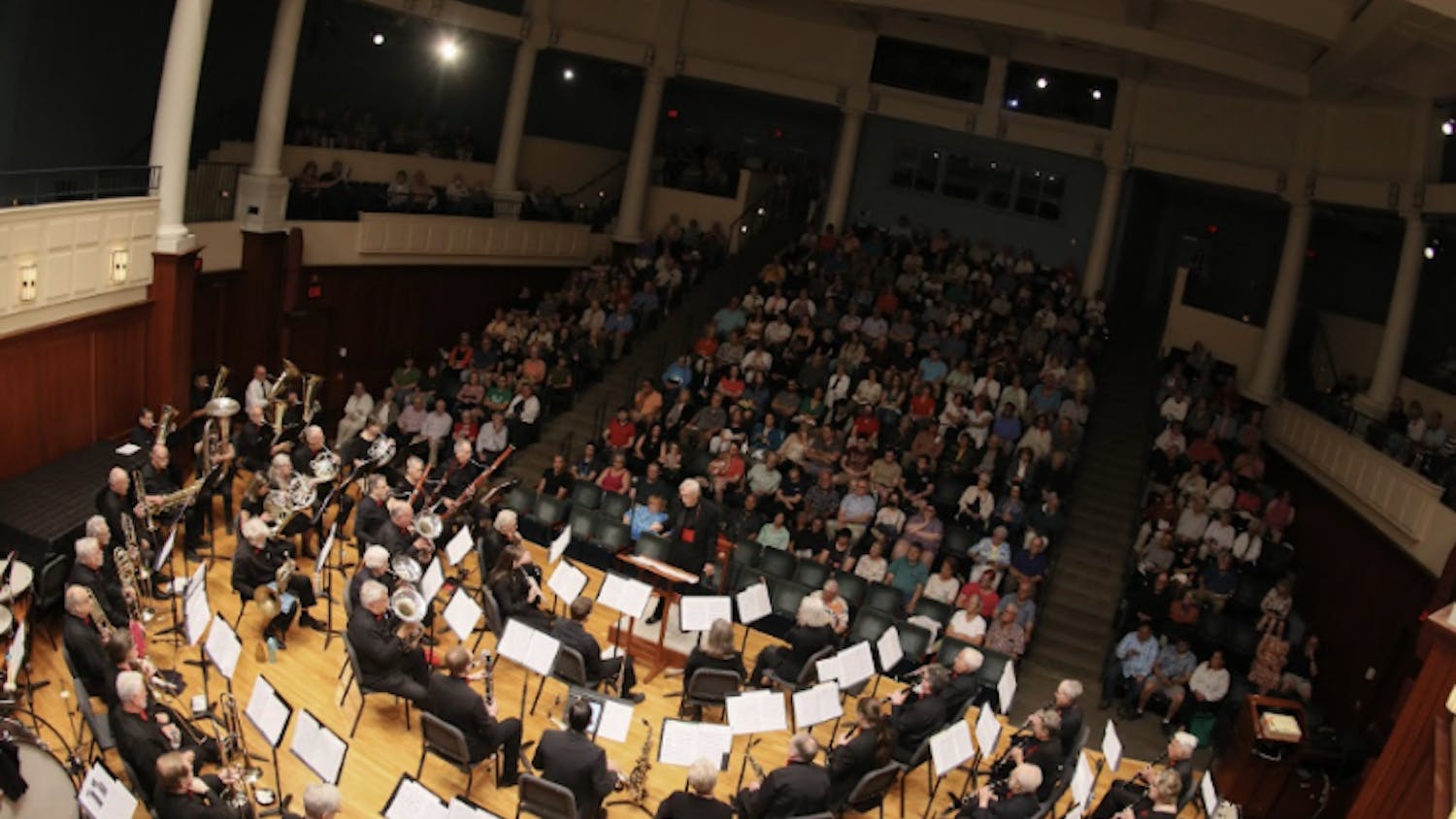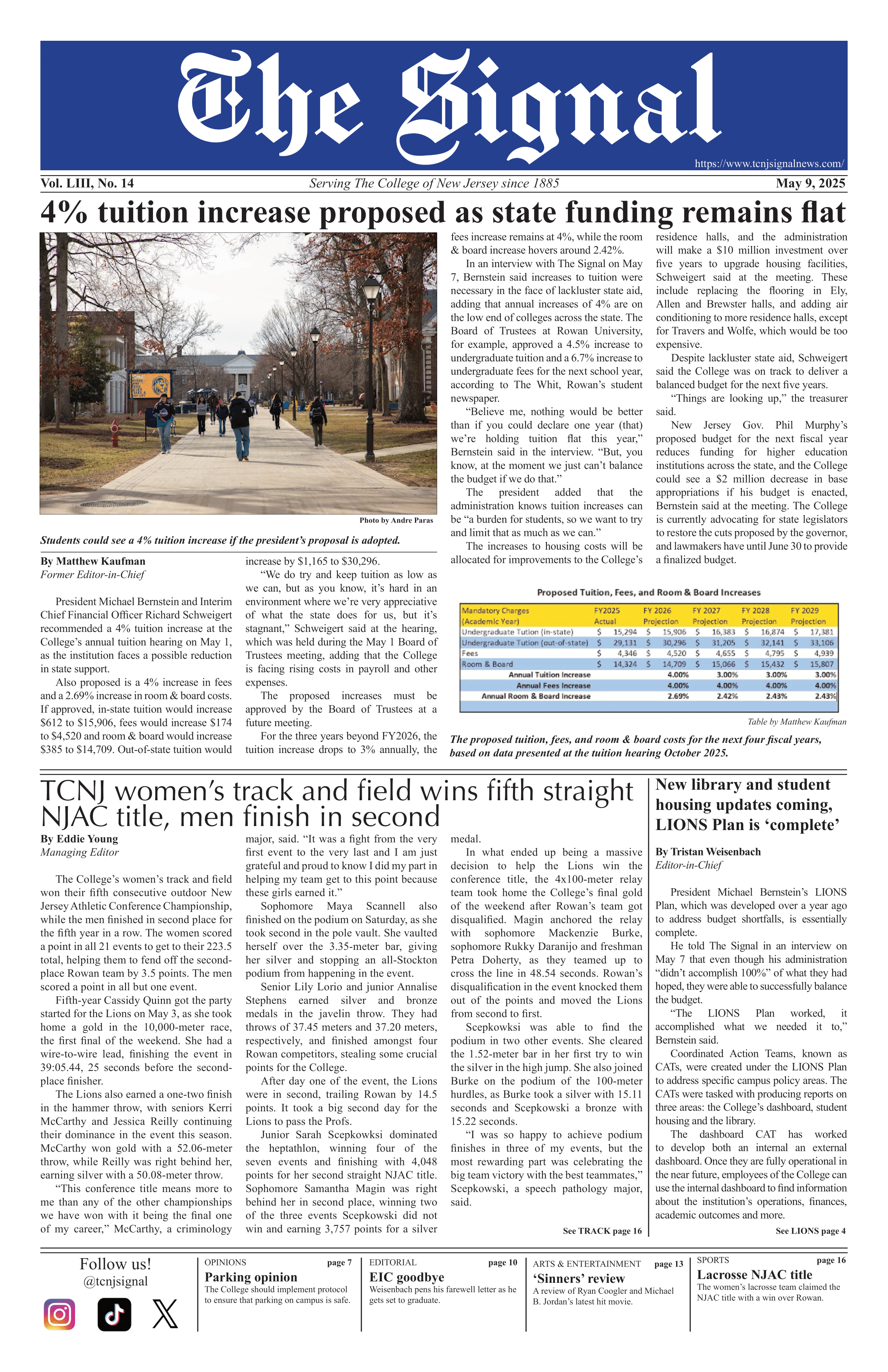"Where are you from?"
It's one of the first questions asked when students meet at the College, and the answer may determine whether one thinks the other eats jimmies and "woodur ice" while sitting on a tractor or sprinkles and Italian ice in a 2005 Acura.
In response to the dialogue and ongoing jokes about statewide disparities, three students conducted a Piper online study of regional stereotypes at the College. Senior psychology major Mark Davis, junior psychology major Emily Bisen-Hersh and junior elementary education and psychology major Lisa Giovannello presented their findings at last semester's Celebration for Student Achievement.
The students hypothesized that New Jersey residents would have more negative perceptions of the opposite regions and more positive perceptions of their own regions. For example, North Jerseyans may view South Jerseyans as hicks, while North Jerseyans may be labeled arrogant and materialistic.
The two regions were divided geographically for the study. North Jersey contained the top half of Middlesex County and everything above that line. South Jersey consisted of Burlington, Ocean, Camden, Gloucester, Atlantic, Salem, Cumberland and Cape May counties. Any area in-between was considered Central Jersey.
"(Central Jerseyans) were not included in this study, as it is likely that they feel less of a connection to one specific region," Bisen-Hersh wrote in an e-mail message.
Just completing the surveys and creating the poster was an experience in regional diversity. Each group member came from one of the three regions - Gionvannello from North Jersey, Davis from South Jersey, and Bisen-Hersh from Central Jersey.
"There were actually a few times when Lisa and I would be working on questions for the survey and find ourselves adhering to the same South Jersey stereotypes that we were trying to measure," Bisen-Hersh wrote.
"During the experiment, they kept asking me stereotypical questions (such as) 'What do you do on the weekends - do you go cow tipping, four wheeling, mudding?'" Davis said.
Actual results in the survey, however, were difficult to measure, Bisen-Hersh said.
"Unfortunately, no significant results were found to support the above hypothesis," Bisen-Hersh wrote. She suggested that people did not want to admit they may hold socially inappropriate stereotypes.
However, she said that the study did support the "contact hypothesis," which states interaction between the two groups is associated with more favorable attitudes.
"Since a college campus fosters many friendships, students have been exposed to countless exceptions of common misconceptions," Bisen-Hersh wrote.
At a New Jersey school, friendly (or not-so-friendly) North/South/Central competition is evidenced by the large variety of facebook.com clubs that boast regional pride or poke fun at the other side.
Particularly popular are "You know you're from South Jersey if you think we should sell North 'Joisey' to NY for $24," with 126 members, and "North Jerseyans Who Think South Jersey Sucks and Smells Funny," with 265 members.
Some members identify strongly with their own region, or just play along for the fun of it.
"What makes me different from a South Jerseyan is that my life is fast-paced," Corey Sherwood, freshman marketing major, wrote in a Facebook message.
"I like my region of the state because the people down here are down to earth and laid back," Angela Crawford, sophomore early childhood education and psychology major, wrote in a Facebook message.
Meanwhile, those in the middle of the state proclaim their legitimacy with the 994 member club, "Central Jersey - we DO exist!"
Some Facebook clubs, such as "South Jersey Secession movement" and "Support South Jersey Partition, State Seperation (sic) or Death!!" have some truth behind them.
Regional differences in the 150- mile-long state go back to before the Europeans arrived. When the Lenni Lenape inhabited New Jersey, there were two different dialects in the North and South.
Before the American Revolution, New Jersey was split into "East" and "West" Jersey, with the Eastern, Quaker-dominated part mostly in the southeast and the Western, Dutch merchant-dominated part mostly in the Northwest.
Then in 1980, 51 percent of South Jerseyans in six counties voted in a non-binding poll to secede and form their own state. The poll carried no weight, but brought to light the economic and cultural differences between the regions.
At the College, however, answers to surveys did not point to definite North/South stereotypes or animosity.
"Many participants (of our study) felt that the prospect of regional differences in such a small state was absurd," Bisen-Hersh said.
One acknowledgeable difference, however, is the slight variance in speech.
"The accents are a big thing," Davis said. "When they say whoodur or whaddur you know that person didn't grow up where you were from."






